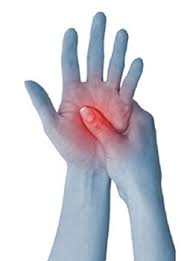 1. Legislation
1. LegislationIn 2018, we saw a significant development in the importance of, and resources committed to, mental health. Campaigns, public figures and unions all did much to raise awareness and to signpost what organisations can do to protect the mental health of employees, and support those struggling with their mental health.
Campaigns such as #TimetoChange and World Mental Health Day both played parts in encouraging conversations about mental health. With this momentum, we anticipate continued focus on this topic and a spotlight on existing legislation.
A recent independent review, Modernising the Mental Health Act: Increasing Choice, Reducing Compulsion, finds that the Mental Health Act 1983 is “outdated and paternalistic”.
“It was written when people with a mental health problem were something to be afraid of,” said Professor Sir Simon Wessely, who chaired the review group of mental health professionals, academics and patients.
“But the way we think about mental health and illness has changed dramatically, so now they are more likely to be seen as people to be helped.”
These findings, coupled with Theresa May’s announcement to invest £2.3 billion in support for individuals suffering from mental health conditions, indicate that 2019 could be another year of significant change in this field. Continue reading

Crush injuries and fatalities sustained from being trapped between two vehicles are all too common – take the time today to check your procedures are not putting your workers at risk. Continue reading

Happy New Year, everyone!
We appreciate your business and look forward to working with you in 2019.
Best wishes
Walker Health and Safety Services Limited
Christmas is an interesting time for businesses. There are lots of temporary changes to work patterns, lots of parties (hopefully!) and most important of all, it’s the time of the year to dust off the decorations and make your office suitably festive. None of these things form part of your usual work activities and so you’ve probably not really thought of these things from a H&S perspective. Happily, a few years ago, the HSE published their “Twelve Myths of Christmas” and so we thought it would be a good time to revisit just a couple of the more relevant points that they raised.
1. Workers are banned from putting up Christmas decorations in the office
We’ve heard this one a lot over the years. Workers are definitely not banned from putting up decorations; however as a responsible Employer it just means that you’ve got to be practical about how you do this. Essentially this means using the correct access equipment (step ladders are fine as this would be classed as short duration and infrequent), being careful with decorations near to sources of heat and ensuring that things such as lights are turned off when your premises are unoccupied.
2. Indoor Christmas lights need a portable appliance test (PAT) every year
This is a contentious one. We would suggest that if you have an in-house PAT testing facility, then this would be a good, practical, thing to do to ensure that the lights aren’t damaged. The HSE actually advise that as long as you are checking for obvious signs of damage and not using obviously faulty lights, then this would be okay.
3. You can’t throw sweets out at a Pantomime
It has been seen in the papers. This is a case where the original company involved was simply afraid of having to pay compensation if anyone got hurt and blamed H&S in order to get their way. Our opinion, and that of the HSE, is that it’s a case of “oh yes you can!” Obviously on the proviso that you don’t have someone like Steve Backley (famous javelin thrower for our younger readers) machine-gunning sweets at 100mph!
4. Carol singers are a health and safety risk
They might be a form of noise pollution to some but as long as you follow sensible precautions, such as not signing in the middle of the road or carrying large quantities of cash, then there’s little risk from a hearty rendition of “Jingle Bells”.
We’ve also heard talk of the necessity to apply for a permit to carol sing. Again, we’re not aware of any legal requirement to do this either! Feel free to belt out your favourites at the top of your voice!
5. You cannot clear snow and ice from pavements
We would encourage everyone to ensure that access to their premises is maintained throughout cold spells. It is incredibly unlikely that you’ll be held responsible if you’ve attempted to do the right thing by clearing a path and then someone slips. In fact, we’ve never seen anybody succeed with any claims of this nature. There are a few tips though to do this successfully
Remember to enjoy yourself!
Christmas is a time to have fun, not to be swamped by health and safety regulations. As long as you take a reasonable and practical method of planning whatever you’re wanting to do to get into the festive spirit, we’re sure that you will be fine!
Stay Safe!
Merry Christmas from Walker Health and Safety Services.
 The company wants to ensure that it is doing all that is reasonably practicable to eliminate and/or reduce the risks from vibration when using such tools in the workplace. Here is some guidance for helping employees in your organisation use hand-held power tools.
The company wants to ensure that it is doing all that is reasonably practicable to eliminate and/or reduce the risks from vibration when using such tools in the workplace. Here is some guidance for helping employees in your organisation use hand-held power tools.
The first step should be to formulate a policy, with the purpose to prevent, so far as is reasonably practicable, the risk of hand–arm vibration syndrome (HAVS) arising from the use of hand-held vibrating tools and equipment. It should include the following.
A risk assessment should identify the various sources and characteristics of the vibration hazard, including the number of employees at risk, allowing for an overall risk evaluation. Those tools or processes of greatest risk should be prioritised and addressed first. It is important that the person carrying out any such assessment is competent to do so.
The basic measures for reducing occupational exposure to hand-transmitted vibration are to eliminate/reduce vibration by using alternative methods or equipment. Vibration transmission to the hands can be reduced by using tools fitted with “anti-vibration handles”.
Organisation at work, job rotation and suitably timed rest breaks may help to reduce vibration exposure. However, it should be remembered that the mathematical relationship between vibration magnitude and exposure time means that a large reduction in time is required before any significant effect on vibration magnitude is seen and it should, therefore, be considered low down the hierarchy of control.
It is important to provide information to employees on the risks associated with hand-transmitted vibration, as well as information on signs and symptoms of HAVS and why these should be reported to their employer, or, if applicable, to the occupational health staff as soon as they are identified.
Employees should be instructed on the actions required to minimise the risk and ways in which they can contribute to risk reduction and control, for example by maintaining good blood circulation, warming both hands and body prior to starting work in cold conditions, keeping warm while working, ensuring that tools are properly maintained, and reporting defects.
Further preventive measures include regular maintenance of vibrating tools and equipment. Information on how to correctly maintain items can be provided by manufacturers or suppliers. It is of equal importance to replace worn parts, correct unbalanced equipment and maintain anti-vibration mounts and devices.
Contact us should you require assistance.